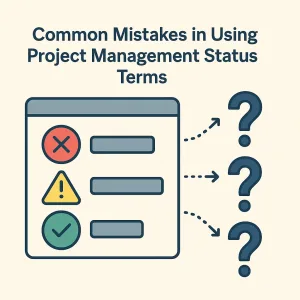Introduction
The concept of activity time refers to the duration allocated for specific tasks or activities within a project timeline. It encompasses not only the actual time spent on completing tasks but also the planning and scheduling aspects that dictate how project milestones are achieved. Understanding activity time is crucial for project managers as it directly impacts project efficiency, resource allocation, and overall success.
However, the perception of activity time is not uniform across cultures. Different cultural backgrounds can significantly influence how individuals and teams view time, deadlines, and the urgency of tasks. For instance, in some cultures, punctuality and strict adherence to schedules are paramount, while in others, a more flexible approach to time may prevail. This divergence can lead to misunderstandings and conflicts within multicultural teams, affecting collaboration and project outcomes.
Recognizing these cultural differences is essential for international project managers who lead diverse teams. By understanding how various cultures perceive and value time, project managers can tailor their strategies to foster better communication, enhance teamwork, and ultimately improve project performance.
Thus, the thesis of this discussion is that cultural perceptions of time influence project management practices globally. This exploration will delve into how these perceptions shape activity time, affecting everything from planning and execution to stakeholder engagement and team dynamics. By examining these cultural impacts, project managers can develop more effective approaches to managing time in a global context, ensuring that projects are completed successfully and on schedule.
Understanding Activity Time
Activity time refers to the duration allocated to various phases of a project, encompassing planning, execution, and monitoring. Understanding how cultural differences influence perceptions of activity time is crucial for international project managers and multicultural teams, as it can significantly affect project outcomes.
Definition of Activity Time and Its Components
Activity time can be broken down into several key components:
- Planning: This phase involves defining project objectives, identifying tasks, estimating durations, and allocating resources. Cultural attitudes towards planning can vary; some cultures may prioritize thorough planning, while others may favor flexibility and adaptability.
- Execution: This is the phase where the actual work takes place. Different cultures may have varying approaches to work pace and collaboration, impacting how activity time is utilized during execution.
- Monitoring: This component involves tracking progress against the project plan, making adjustments as necessary. Cultural differences can influence how feedback is given and received, which can affect the efficiency of monitoring processes.
Measurement and Tracking of Activity Time
In project management, activity time is typically measured using various tools and techniques, such as Gantt charts, critical path method (CPM), and earned value management (EVM). These methods help project managers track progress and ensure that projects stay on schedule. However, cultural perceptions of time can affect how these tools are utilized:
- Cultural Attitudes Towards Time: Different cultures have distinct beliefs about time, which can influence how deadlines are perceived and adhered to. For instance, some cultures may view deadlines as flexible, while others may see them as strict commitments. This can lead to misunderstandings and conflicts if not managed properly [2][6].
- Communication Styles: The way time-related matters are communicated can also vary across cultures. For example, some cultures may prefer direct communication about deadlines, while others may use more indirect methods, which can lead to ambiguity in expectations [9][14].
Time as a Resource in Project Management
Time is often considered one of the most critical resources in project management. It is finite and must be managed effectively to ensure project success. Cultural differences can impact how time is viewed as a resource:
- Work-Life Balance: Different cultures have varying attitudes towards work-life balance, which can influence how much time is dedicated to project activities. Some cultures may prioritize personal time, leading to a more relaxed approach to project timelines, while others may emphasize long working hours and tight schedules [9][15].
- Innovative Thinking: Effective use of diverse cultural perspectives can enhance creativity and problem-solving within project teams. By understanding and integrating different cultural approaches to time management, project managers can foster an environment that encourages innovative thinking and improves project outcomes [2][5].
Cultural Perspectives on Time
Understanding cultural attitudes towards time is crucial for international project managers and multicultural teams. Different cultures perceive and value time in distinct ways, which can significantly influence project scheduling, deadlines, and overall management practices. Here are some key points to consider:
Monochronic vs. Polychronic Cultures
- Monochronic Cultures: These cultures, often found in Western societies, view time as linear and segmented. Time is treated as a commodity that can be saved, spent, or wasted. In these cultures, punctuality is highly valued, and schedules are strictly adhered to. Project managers in monochronic cultures tend to prioritize deadlines and task completion, often leading to a structured approach to project management. This can enhance efficiency but may also create stress if deadlines are perceived as rigid.
- Polychronic Cultures: In contrast, polychronic cultures, which are prevalent in many Latin American, African, and Middle Eastern societies, view time as more fluid and flexible. Relationships and interactions take precedence over strict adherence to schedules. In these cultures, project managers may prioritize building relationships and fostering collaboration over meeting deadlines. This approach can lead to a more adaptable project environment but may also result in challenges when it comes to time management and meeting project milestones.
Linear vs. Cyclical Perception of Time
- Linear Perception: Cultures with a linear perception of time, such as those in the United States and much of Europe, approach project management with a clear beginning, middle, and end. Tasks are often completed sequentially, and there is a strong emphasis on planning and forecasting. This perspective supports a structured project timeline, where each phase is carefully scheduled and monitored.
- Cyclical Perception: Many Indigenous cultures, on the other hand, embrace a cyclical view of time, where events are seen as part of a larger, ongoing process. This perspective can influence project management by allowing for more flexibility in timelines and an emphasis on the interconnectedness of tasks. Project managers operating in these contexts may find that adapting to changing circumstances is more acceptable than adhering to a strict schedule.
Cultural Norms Affecting Scheduling and Deadlines
- Scheduling Practices: In monochronic cultures, meetings are often scheduled well in advance, and agendas are strictly followed. Conversely, in polychronic cultures, meetings may be arranged spontaneously, and discussions can meander, reflecting the importance of interpersonal relationships over strict time management.
- Deadlines: In linear cultures, missing a deadline can be seen as a significant failure, while in cyclical cultures, deadlines may be viewed as more flexible, allowing for adjustments based on the project’s evolving needs. This difference can lead to misunderstandings and conflicts in multicultural teams if not addressed.
- Time Allocation: Cultural norms also influence how time is allocated for tasks. In monochronic cultures, time is often divided into specific blocks for each task, while in polychronic cultures, time may be allocated based on the flow of work and the needs of the team, leading to a more organic approach to project management.
Adapting Project Management Practices
Understanding how cultural differences influence perceptions of activity time is crucial for international project managers and multicultural teams. Here are some strategies to effectively navigate these differences:
Assessing Cultural Backgrounds and Their Impact on Time Management
- Conduct Cultural Assessments: Utilize tools such as Hofstede’s Cultural Dimensions Theory to evaluate team members’ cultural backgrounds. This framework can help project managers understand how different cultures perceive time, whether they lean towards a more rigid, linear approach or a flexible, fluid perspective [4][6].
- Engage in Open Dialogue: Encourage team members to share their cultural views on time management. This can be facilitated through team-building activities or workshops that focus on cultural awareness, allowing members to express their expectations and preferences regarding deadlines and schedules [5][10].
Communication Strategies for Diverse Perceptions of Time
- Establish Clear Communication Channels: Use various communication tools to ensure that all team members are on the same page regarding timelines and deadlines. Regular updates and check-ins can help clarify expectations and accommodate different cultural approaches to time [11].
- Practice Active Listening: When discussing timelines, project managers should practice active listening to understand the nuances of how team members from different cultures perceive time. This approach fosters respect and can lead to more effective collaboration [9].
Encouraging Flexibility in Scheduling and Project Timelines
- Implement Flexible Scheduling: Recognize that some cultures may prioritize relationships over strict adherence to timelines. Allow for flexibility in scheduling to accommodate these differences, which can enhance team morale and productivity [13][14].
- Adjust Project Timelines: Be willing to adapt project timelines based on cultural insights. For instance, in cultures that view time as more fluid, project managers might consider breaking tasks into smaller, more manageable segments that can be adjusted as needed [12][13].
By incorporating these strategies, project managers can create a more inclusive environment that respects and accommodates diverse perceptions of activity time. This not only enhances collaboration but also contributes to the overall success of multicultural projects.
Tools and Techniques for Managing Activity Time
Particularly within multicultural teams, understanding and managing activity time is crucial. Cultural differences can significantly influence perceptions of time, deadlines, and scheduling. Here are some recommended tools and techniques that can help project managers effectively manage activity time across diverse cultural backgrounds.
1. Project Management Software for Flexible Scheduling
Utilizing project management software that accommodates flexible scheduling is essential for international teams. These tools allow project managers to:
- Customize Timelines: Software like ProjectManager offers features such as Gantt charts and project calendars that can be adjusted to reflect different cultural approaches to time management. This flexibility helps in setting realistic deadlines that consider varying cultural norms regarding punctuality and time allocation [1].
- Real-Time Updates: Tools that provide real-time dashboards enable teams to monitor progress and adjust timelines as needed, ensuring that all members are aligned with the project’s pace and expectations [11].
2. Effective Time Zone Management Techniques
Managing time zones is a critical aspect of coordinating activities across different regions. Here are some techniques to enhance time zone management:
- Utilize Online Tools: Encourage the use of online resources like The World Clock or Time Zone Converter to help team members keep track of different time zones. This can minimize confusion regarding meeting times and deadlines, fostering a more cohesive working environment [5].
- Set Clear Expectations: Clearly communicate the time zone in which deadlines are set and ensure that all team members understand how this affects their responsibilities. This practice can help mitigate misunderstandings and promote accountability [2].
3. Collaborative Tools for Communication and Alignment
Effective communication is vital for aligning activity time expectations among multicultural teams. Consider the following collaborative tools:
- Visual Task Management: Kanban boards are an excellent way to visualize workflows and manage tasks. They allow team members to see the status of various activities and understand how their work fits into the overall project timeline. This transparency can help bridge cultural differences in work pace and expectations [10].
- Communication Platforms: Tools like Slack facilitate open communication, allowing team members to discuss timelines, share updates, and address any concerns regarding activity time. Regular check-ins through these platforms can help ensure that everyone is on the same page and that cultural differences are acknowledged and respected [14].
By leveraging these tools and techniques, project managers can effectively navigate the complexities of managing activity time in multicultural environments. Understanding and accommodating cultural differences in time perception not only enhances project efficiency but also fosters a more inclusive and collaborative team dynamic.
Conclusion
Understanding the cultural influences on activity time is paramount for success, especially in today’s globalized environment. Cultural differences shape how teams perceive time, deadlines, and the urgency of tasks, which can significantly impact project outcomes. For instance, in some cultures, punctuality is strictly adhered to, while in others, a more flexible approach to time may be the norm. This divergence can lead to misunderstandings and conflicts if not managed effectively. Therefore, project managers must recognize and respect these cultural nuances to foster a collaborative atmosphere that enhances productivity and project success.
Moreover, the dynamic nature of multicultural project environments necessitates ongoing learning and adaptation. Project managers should actively seek to understand the cultural backgrounds of their team members and how these backgrounds influence their perceptions of activity time. By promoting cultural sensitivity and encouraging open communication, teams can navigate potential challenges and leverage their diverse perspectives to drive innovation and creativity.
Find out more about Shaun Stoltz https://www.shaunstoltz.com/about/.
This post was written by an AI and reviewed/edited by a human.



